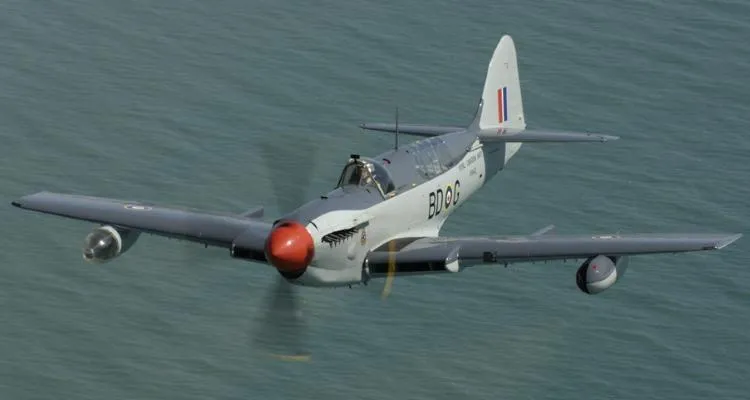Alexander, Edmund Walker (Acting Sub-Lieutenant)
Killed in Flying Accident 1954-October-11

Birth Date: 1929-May-07
Born: Hamilton, Ontario
Parents: Son of Edmund Walker and Jeanette McDougald (ne Breadner) Alexander of Toronto, Ontario.
Spouse: Husband of Lorna Delma (ne Bolduc) Alexander of Vancouver, British Columbia. Brother of Jocelyn H., Nancy J., L
Home: Hamilton, Ontario
Enlistment:
Enlistment Date: unkown date
Service
RCN
Unit
(RCN)
Base
HMCS NIOBE (on exchange)
Rank
Acting Sub-Lieutenant
Position
Service Numbers
01484
Home
Crew or Other Personnel
Firefly (Fairey) DK542
Firefly (Fairey) serial: DK542

Canadian Warplane Heritage Museum
The Firefly was designed by Fairey Aviation, UK, in 1940 to meet a British Admiralty requirement for a carrier borne, fighter reconnaissance aircraft. The Firefly prototype first flew in December 1941 from Fairey's Great West Aerodrome, (now Heathrow Airport). Successful flight trials were completed by the end of 1942 and the first production aircraft, Mk. Is were delivered to the Royal Navy in March 1943.
Fireflies went into squadron service in October 1943 and later saw action in July 1944 against the German battleship Tirpitz, in Norway, when flying from HMS Indefatigable. From January 1945 onwards, the main area of operations for the Firefly was the Far East. Flying from HMS Indefatigable and HMS Implacable, they fought against the Japanese in Sumatra, the Caroline Islands and in the waters surrounding Japan. Later, Fairey Fireflies served with the Royal Navy and the Royal Australian Navy, during the Korean War.
A total of 64 Fairey Fireflies served with the Royal Canadian Navy (RCN), between 1946 and 1952. Based at Dartmouth, NS, they were flown from the aircraft carriers HMCS Warrior and HMCS Magnificent by No. 825 and 826 Squadrons. The Mk. V anti submarine version was ordered in 1949 to meet a NATO role for the RCN in anti submarine warfare. Firefly Mk. Vs operated in this role until late 1950, when they were replaced by Grumman Avengers.
Manufacture of the Fairey Firefly ceased in April 1956, after 1,702 aircraft had been produced. About 20 Fireflies survive. Canadian Warplane Heritage Museum
